Key Highlights:
PM Modi’s 2015 vision: “If connectivity initiatives have to succeed, we must not only build infrastructure, we must also build bridges of trust”
Major connectivity initiatives expanding: IMEC announced at G20 2023 with 30-40% cost-time reduction; INSTC reducing transit by 40%, costs by 30%; Chabahar Port providing Central Asia access
Trust deficit threatening progress: Bangladesh crisis 2025 generating anti-India sentiment; Gaza conflict disrupting IMEC; Nepal, Sri Lanka political instability affecting projects
BIMSTEC emerges as SAARC alternative: India pivoting from paralyzed SAARC to functional BIMSTEC framework excluding Pakistan, aligning with Act East Policy
India-Bhutan model demonstrates success: Hydropower cooperation generating 3,490 MW capacity through trust-based partnerships, mutual benefit-sharing, community-centric approach
The Infrastructure-Trust Paradox in India’s Diplomacy
Prime Minister Narendra Modi articulated a profound truth in 2015 that continues to define India’s connectivity challenges: “If connectivity initiatives have to succeed, we must not only build infrastructure, we must also build bridges of trust”. This statement encapsulates the critical shift needed in India’s foreign policy—from viewing connectivity purely as physical infrastructure to recognizing it as fundamentally a trust-building exercise. delhipolicygroup
India’s connectivity architecture is expanding rapidly through ambitious initiatives like the India-Middle East-Europe Economic Corridor (IMEC), International North-South Transport Corridor (INSTC), Chabahar Port development, and regional frameworks like BIMSTEC. Yet these impressive infrastructure projects face a persistent challenge: trust deficits with neighbors and partners that threaten to undermine their long-term viability and strategic objectives.
India’s Connectivity Architecture: The Infrastructure Foundation
India-Middle East-Europe Economic Corridor (IMEC)
Announced at the G20 New Delhi Summit in September 2023, IMEC represents India’s most ambitious multimodal connectivity initiative. The corridor comprises two segments: the Eastern Corridor connecting India to the Gulf region (UAE-Saudi Arabia-Jordan-Israel) and the Northern Corridor linking the Gulf to Europe via Greece.
IMEC promises to reduce logistics costs by 30% and transportation time by 40% compared to the Suez Canal maritime route, with projected capacity to move 1.5-3 million TEUs annually. The initiative integrates rail, maritime, energy pipelines, and digital cables as part of the G7’s Partnership for Global Infrastructure and Investment (PGII). Strategically, IMEC positions itself as an alternative to China’s Belt and Road Initiative, bypassing Pakistan and offering transparent, debt-free development.
However, the October 2023 Gaza conflict exposed IMEC’s fragility. The project requires Israeli-Saudi normalization and regional stability—both remain uncertain. The corridor has a financing gap of approximately $5 billion to become minimally operational.
International North-South Transport Corridor (INSTC)
The INSTC is a 7,200-km multimodal network connecting India to Russia, Central Asia, and Europe via Iran. First mooted in 2000 and formalized by India, Iran, and Russia in 2002, the corridor now includes 13 member countries.
The route begins in Mumbai, transits through Bandar Abbas and Bandar-e-Anzali in Iran, crosses the Caspian Sea, and reaches Russia via Astrakhan, Moscow, and St. Petersburg. INSTC reduces transit time by 30-40% (from 45-60 days to 25-30 days) and costs by 30% compared to traditional Suez Canal routes.
Chabahar Port: Gateway to Central Asia
Chabahar Port in southeastern Iran serves as India’s strategic gateway to Afghanistan and Central Asia, bypassing Pakistan. Located just 170 km from China-backed Gwadar Port in Pakistan, Chabahar provides India with geopolitical leverage and direct trade access to landlocked Central Asian countries.
India signed a bilateral agreement in May 2016 to develop the Shahid Beheshti port, taking over operations in December 2018. The port is integral to INSTC, connecting via rail and road to Central Asia through internal Iranian corridors. In October 2017, India shipped its first consignment of wheat to Afghanistan through Chabahar, demonstrating the port’s humanitarian and strategic utility.
Regional Connectivity Frameworks
The Bangladesh-Bhutan-India-Nepal (BBIN) Motor Vehicles Agreement, signed in June 2015, aims to facilitate seamless passenger, personal, and cargo vehicular traffic across borders. The agreement emerged after Pakistan’s opposition blocked a SAARC-wide motor vehicles agreement in 2014. While Bhutan temporarily opted out in 2017 due to parliamentary concerns, Bangladesh, India, and Nepal have proceeded with implementation.
The India-Myanmar-Thailand Trilateral Highway stretches 1,360 km from Moreh (Manipur) to Mae Sot (Thailand) via Myanmar. Proposed in 2002 and under construction since 2012, the highway is part of India’s Act East Policy, expected to generate $70 billion in incremental GDP and 20 million jobs by 2025. However, Myanmar’s military coup in 2021 and internal strife have delayed completion, with only 70% constructed.
BIMSTEC: The Emerging Alternative
The Bay of Bengal Initiative for Multi-Sectoral Technical and Economic Cooperation (BIMSTEC) comprises seven members—Bangladesh, Bhutan, India, Myanmar, Nepal, Sri Lanka, and Thailand. India has increasingly pivoted to BIMSTEC following SAARC’s paralysis due to India-Pakistan tensions, particularly after the 2016 Uri terror attack.
Prime Minister Modi invited BIMSTEC leaders to the 2016 BRICS Summit in Goa and his second inauguration in 2019, signaling BIMSTEC’s strategic priority. The grouping adopted the BIMSTEC Bangkok Vision 2030 at the 6th Summit in April 2025, focusing on maritime connectivity, security cooperation, and economic integration.
The Trust Deficit: Why Infrastructure Alone Fails
Historical Baggage and Regional Suspicions
Despite India’s pivotal role in Bangladesh’s liberation in 1971, anti-India sentiment has grown significantly in recent years. This paradox stems from perceptions of India as a “big brother” with hegemonic tendencies, legacy issues from the Cold War era creating a trust vacuum, and Pakistan’s narrative of Indian aggression resonating in some regional circles. netranews
The August 2024 student uprising that toppled Sheikh Hasina’s government and her subsequent refuge in India deepened anti-India sentiment. Protests with chants of “India Out” erupted nationwide, with Bangladeshis perceiving India’s support for Hasina as interference in domestic politics and disregard for sovereignty. The interim government led by Muhammad Yunus has exhibited geopolitical realignment toward China and Pakistan, with some Bangladeshis expressing religious solidarity with Pakistan despite historical wounds from 1971.
Contributing factors include border killings by Indian forces, disputes over Farakka Barrage (Padma River) and Teesta River water allocation, concerns about the Citizenship Amendment Act (CAA) 2019 and National Register of Citizens (NRC) perceived as anti-Muslim, and Indian media disinformation campaigns portraying Bangladesh as a failing state.
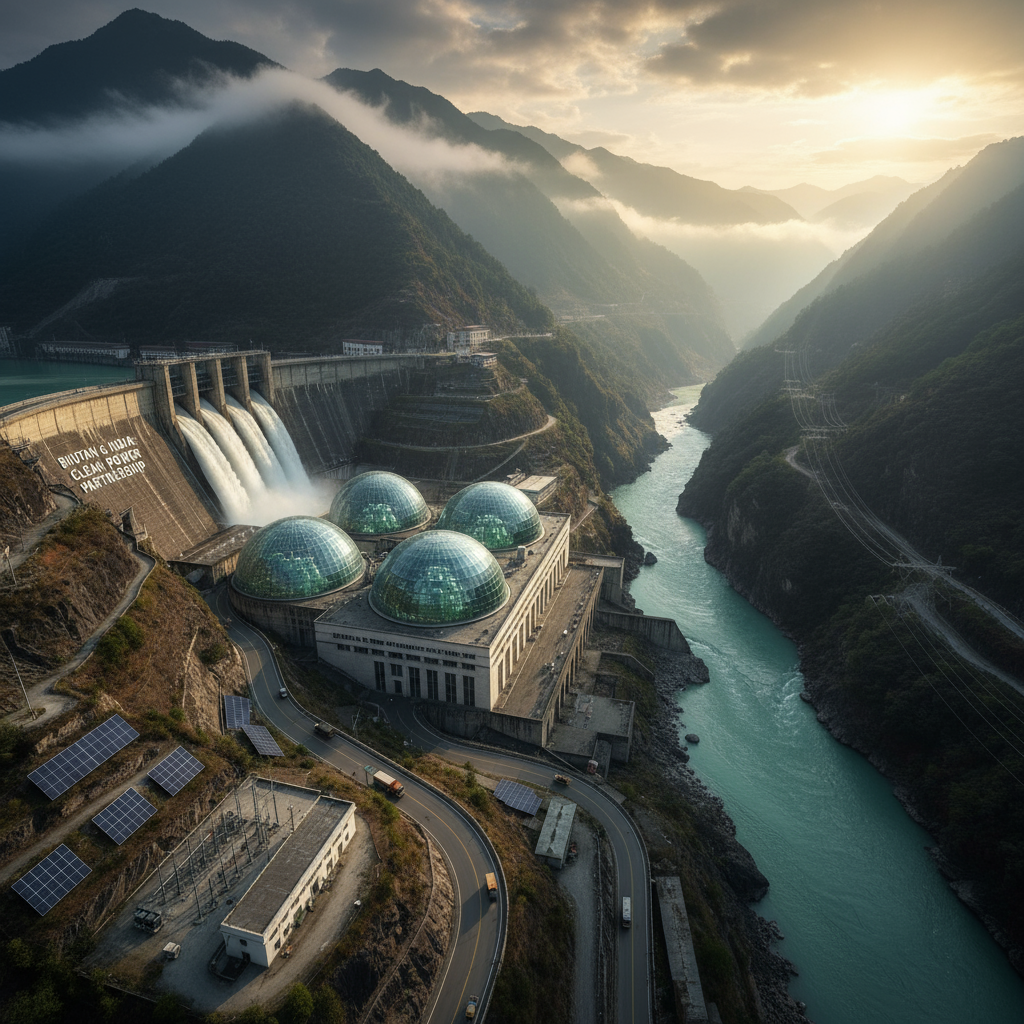
Geopolitical Competition: China’s BRI Shadow
China’s Belt and Road Initiative has created economic dependencies across India’s neighborhood through massive infrastructure funding. Pakistan, Sri Lanka, Maldives, and Bangladesh have been attracted to Chinese financing, often through opaque agreements that create debt traps and undermine India’s influence.
The China-Pakistan Economic Corridor (CPEC) and Gwadar Port directly challenge India’s connectivity ambitions, particularly IMEC and Chabahar. Sri Lanka’s Hambantota Port lease to China for 99 years after debt default exemplifies the risks. Middle East volatility further complicates IMEC’s viability—the Gaza conflict stalling Saudi-Israeli normalization essential for the corridor’s success.
Implementation Failures and Community Alienation
Connectivity projects frequently face delays, cost overruns, and implementation deficits after decades of policy stagnation. Coordination challenges between central and state governments, private sector, and neighboring countries hinder progress. Infrastructure projects are often top-down, ignoring local communities who don’t experience tangible benefits, particularly border populations.
Political instability in Nepal, Bangladesh, and Sri Lanka disrupts continuity, with domestic politics weaponizing India ties for electoral gains. Neighbors remain wary of projects perceived as Indian strategic penetration, necessitating greater respect for territorial integrity and local sensitivities.
Conceptualizing Trust Corridors: From Transactional to Transformational
Definition and Core Philosophy
Trust corridors represent multidimensional engagement frameworks prioritizing relationship-building alongside infrastructure. This paradigm shifts from transactional to transformational diplomacy, embedding connectivity in shared values, mutual respect, and people-centric development rather than merely steel and concrete.
Five Pillars of Trust Corridors
1. Regulatory and Digital Connectivity: Seamless customs, harmonized standards, and interoperable systems reduce transactional friction. India has successfully expanded UPI digital payment platforms to Nepal, Bhutan, and UAE, creating virtual trade corridors. Sharing digital public infrastructure like Aadhaar, CoWIN, and BHIM strengthens technological interdependence.
2. People-Centric Development: Community participation in border region projects ensures local buy-in and livelihood benefits. Border haats (markets), cross-border markets, and simplified trade for small businesses integrate communities economically. Healthcare and education access improvements for border populations address deprivation that breeds mistrust.
3. Cultural and Civilizational Linkages: Leveraging ancient Silk Road, Buddhist circuit, and Islamic heritage ties creates emotional proximity beyond transactional exchanges. PM Modi’s visits to Bodh Gaya, Pashupatinath, and Nalanda deepen civilizational connections. Cultural diplomacy through tourism, heritage preservation, language training, festivals, and educational exchanges strengthens people-to-people bonds.
4. Soft Power Projection: Yoga diplomacy, International Solar Alliance, disaster relief (Operation Maitri), and India’s vaccine supply during COVID-19 showcase values-based leadership. The Indian diaspora serves as bridge-builders, while media collaboration counters misinformation campaigns that erode trust.
5. Inclusive Governance: Multi-stakeholder participation involving governments, private sector, civil society, and communities builds credibility through transparency and accountability. Consultation-based approaches respecting sovereignty differentiate India’s model from China’s top-down, debt-trap approach.
Strategic Imperatives: Why Trust Corridors Now?
Navigating Multipolarity and Strategic Autonomy
India’s multi-alignment strategy requires navigating US-China bipolarity while asserting independence. Trust-based relations enable flexible coalitions without bloc politics constraints. In the Indo-Pacific context, India’s SAGAR (Security and Growth for All in the Region) mission positions it as a net security provider, requiring trust among democracies in the Quad partnership.
Neighbourhood First Recalibration
The Bangladesh crisis of 2025 exposed vulnerabilities in India’s neighbourhood approach. Anti-India sentiment, geopolitical realignment toward China/Pakistan, and trade tensions threaten connectivity projects, demanding urgent trust-building through multi-vector diplomacy and grassroots engagement.
Sri Lanka and Maldives have experienced political turbulence threatening Indian projects, with China exploiting trust deficits. Institutionalized mechanisms transcending government changes are essential for stability.
Economic Integration and Supply Chain Resilience
Post-pandemic supply chain diversification from China requires trusted regional partners. India positioning as a manufacturing hub needs reliable connectivity infrastructure and predictable policy environments. Energy transition through green hydrogen and renewable energy cooperation demands long-term trust and joint investments.
Case Studies: Lessons from Success and Failure
Success: India-Bhutan Hydropower Cooperation
India-Bhutan hydropower cooperation exemplifies the trust corridor model. Commencing in 1961 and receiving impetus with the 1974 Chukha HEP agreement, the partnership has successfully commissioned five major projects—Chukha (336 MW), Kurichhu (60 MW), Tala (1020 MW), Mangdechhu (720 MW), and Punatsangchhu-II (1020 MW)—generating 3,490 MW capacity.
The trust-based model involves India funding projects (60% grant, 40% low-interest loan) while Bhutan controls operations, with mutual benefit-sharing through electricity trade. Hydropower contributes 14% of Bhutan’s GDP, 27% of government revenue, and provides clean energy to India. The community-centric approach ensures local acceptance, contrasting with China’s debt-trap diplomacy.
The Mangdechhu HEP won the prestigious Brunel Medal-2020, underscoring technical excellence. Three projects currently under construction—Punatsangchhu-I (1200 MW), Punatsangchhu-II (1020 MW), and Kholongchhu (600 MW)—demonstrate ongoing momentum.
Success: Kartarpur Corridor
The Kartarpur Corridor, opened in 2019, enables visa-free access for Indian Sikh pilgrims to Gurdwara Darbar Sahib in Pakistan. This people-to-people connectivity initiative transcends India-Pakistan political hostility, serving as a peace-building tool through cultural diplomacy. It demonstrates that religious and cultural linkages can create trust islands even amid geopolitical tensions.
Failure: IMEC Uncertainty
The Gaza conflict beginning October 2023 exposed IMEC’s fragility without foundational political trust. Saudi-Israeli normalization, a prerequisite for the corridor’s Eastern segment, has stalled indefinitely. The $5 billion financing gap and lack of conflict-resilient frameworks threaten the project’s viability despite its strategic importance.
Iran’s exclusion from IMEC creates additional complications, as Iran views the corridor as threatening its regional influence and has positioned the INSTC as an alternative. This highlights the risks of connectivity initiatives that bypass key regional stakeholders without adequate trust-building.
Failure: Nepal Connectivity Delays
The Raxaul-Kathmandu railway and petroleum pipeline projects face significant implementation hurdles despite India’s Neighbourhood First policy. Political instability, frequent government changes, coordination gaps between Indian ministries and state governments, and inadequate consultation with local communities have delayed progress.
Nepal’s ambivalence toward India, exploited by China’s checkbook diplomacy, demonstrates that infrastructure commitments without sustained trust-building create vulnerabilities.
Building Trust Corridors: Operational Framework
Institutional Reforms
Establishing a Prime Minister’s Office-led apex coordination body integrating the Ministry of External Affairs, Commerce, Finance, and Infrastructure ministries is essential. State government inclusion for border region projects addresses federal coordination challenges that have plagued implementation.
Revitalizing regional cooperation mechanisms through sub-regional formats like BIMSTEC and BBIN provides alternatives to SAARC paralysis. Annual summits, ministerial dialogues, and permanent secretariats create predictability, reducing ad-hocism.
Community Engagement and Livelihood Integration
Strengthening the Border Area Development Programme (BADP) with development focus rather than purely security orientation integrates local voices in project design and implementation. Cross-border markets simplifying trade for small businesses, joint agricultural and water resource management projects, and healthcare-education access removing deprivation create tangible benefits for border populations.
Soft Power Amplification
PM Modi’s cultural site visits to Bodh Gaya, Pashupatinath, and Nalanda deepen civilizational ties through visible leadership engagement. Promoting the Buddhist circuit, Ramayana trail, and Islamic heritage preservation leverages India’s cultural wealth. Festivals, cultural exchanges, and language programs create emotional connections transcending political disputes.
Digital and media outreach countering misinformation campaigns, broadcasting India’s development story authentically, and diaspora mobilization for people-to-people connections are critical in the age of information warfare.
Transparency and Sustainability
An open-book approach with public disclosure of project costs, timelines, and benefits, environmental and social impact assessments, and third-party monitoring builds credibility that opaque Chinese agreements lack. Sustainability focus through green infrastructure, renewable energy, climate-resilient design, respect for sovereignty, avoidance of debt-trap models, and local employment-skill development prioritization differentiates India’s model.
Public-Private Partnerships and Technology Integration
PPP models bring private sector efficiency, innovation, and financial viability while sharing risks and reducing government burden. Technology integration through undersea cables, satellite communication, e-governance, fintech cooperation (UPI export), and cybersecurity collaboration enhances digital connectivity.
Smart infrastructure using IoT and AI for intelligent transportation and energy grids with real-time monitoring improves efficiency and demonstrates India’s technological capabilities.
Comparative Analysis: India vs. China’s Connectivity Approach
China’s BRI Model
China’s approach prioritizes infrastructure-first with massive funding for ports, roads, and railways through debt diplomacy creating dependencies and strategic control. Opacity characterizes non-transparent agreements with environmental concerns, while geopolitical leverage translates infrastructure access into military presence at Gwadar and Hambantota.
India’s Trust Corridor Advantage
India’s relationship-first approach prioritizes trust-building preceding infrastructure. A grant-assistance mix avoids debt traps through sustainable financing, while transparency ensures open processes and community consultation. Sovereignty respect with no coercion and territorial integrity as paramount principles, combined with people-centric development diplomacy benefiting local populations, creates sustainable partnerships.
India’s competitive advantages include democratic values resonating with partners, cultural ties from ancient civilizational linkages China lacks, soft power through Yoga, Ayurveda, IT, and cinema creating positive associations, and no hegemonic intent—offering partnerships, not vassals.
Way Forward: Actionable Recommendations
Short-Term (1-2 years)
Institutionalize trust-building dialogue at BIMSTEC and bilateral levels with regular summits and ministerial exchanges. Launch pilot trust corridor projects in Bhutan and Bangladesh border regions demonstrating the model’s effectiveness. Expand UPI and digital stack to willing neighbors (Nepal, Bhutan, Sri Lanka) creating seamless financial integration.
Cultural diplomacy offensive through Buddhist circuit development, heritage conservation projects, and festival exchanges strengthens civilizational bonds. Reset Bangladesh ties through multi-vector engagement addressing water disputes, border issues, and grassroots outreach countering anti-India narratives.
Medium-Term (3-5 years)
Operationalize regulatory connectivity frameworks harmonizing customs and standards across BIMSTEC and BBIN countries. Establish an India-led Connectivity Finance Facility for sustainable project funding offering transparent, non-debt-trap alternatives to Chinese financing.
Create a Neighbourhood Connectivity Monitoring Cell under PMO ensuring implementation oversight and addressing coordination challenges that have plagued projects. Scale border area development integrating communities into connectivity benefits through employment, skill development, and infrastructure improvements.
Deepen India-US cooperation on regional connectivity through PGII and Indo-Pacific frameworks.
Long-Term (5-10 years)
Position India as a trusted bridge of global connectivity through IMEC and INSTC operationalization despite current challenges. Achieve seamless South Asian economic integration via trust corridors creating a regional common market.
Export the trust corridor model to Africa, Latin America, and Pacific Islands as India assumes global leadership in the Global South. Lead Global South connectivity alternatives to BRI offering sustainable, transparent, sovereignty-respecting frameworks.
Realize civilizational integration narrative linking Asia, Middle East, and Europe through cultural, digital, and economic ties.
Conclusion: From Steel to Hearts, From Roads to Relationships

PM Modi’s 2015 vision that connectivity requires building “bridges of trust” not just infrastructure remains profoundly relevant as India expands its connectivity architecture through IMEC, INSTC, BBIN, and BIMSTEC. Yet the critical gap persists—physical corridors are outpacing trust corridors, creating vulnerabilities exposed by the Bangladesh crisis, Gaza conflict disrupting IMEC, and Nepal’s ambivalence exploited by China.
Trust corridors represent a paradigm shift from transactional to transformational diplomacy through regulatory-digital connectivity, people-centric development, cultural linkages, soft power projection, and inclusive governance. Strategic imperatives—multipolar order navigation, Indo-Pacific centrality, neighbourhood recalibration, and economic integration—make trust-building urgent, not optional.
India’s advantage over China lies in democratic values, civilizational ties, soft power, and sovereignty respect that create sustainable partnerships rather than dependencies. The India-Bhutan hydropower cooperation demonstrates how trust-based models generate mutual prosperity through 3,490 MW capacity built on respect, transparency, and community engagement.
Challenges remain—resource constraints compared to China’s financial muscle, bureaucratic inertia causing implementation deficits, geopolitical spoilers like Pakistan’s obstructionism and third-party conflicts, and perception management overcoming the “big brother” image. Yet the operational framework is clear: institutional reforms, community engagement, transparency, PPPs, and technology integration.
Understanding connectivity as a holistic foreign policy tool transcending infrastructure is essential. Neighbourhood First policy success is contingent on trust-building matching infrastructure ambition. As Minister Piyush Goyal emphasized, IMEC is built on “mutual trust, inclusivity, sustainability—not dominance”.
Trust corridors are not alternatives to trade corridors but essential complements ensuring longevity, local buy-in, and resilience against geopolitical shocks. India’s rise as a leading power requires reimagining connectivity from steel and concrete to hearts and minds—where infrastructure imbued with shared values, mutual respect, and sustainable development creates pathways to peaceful, prosperous, integrated regions.

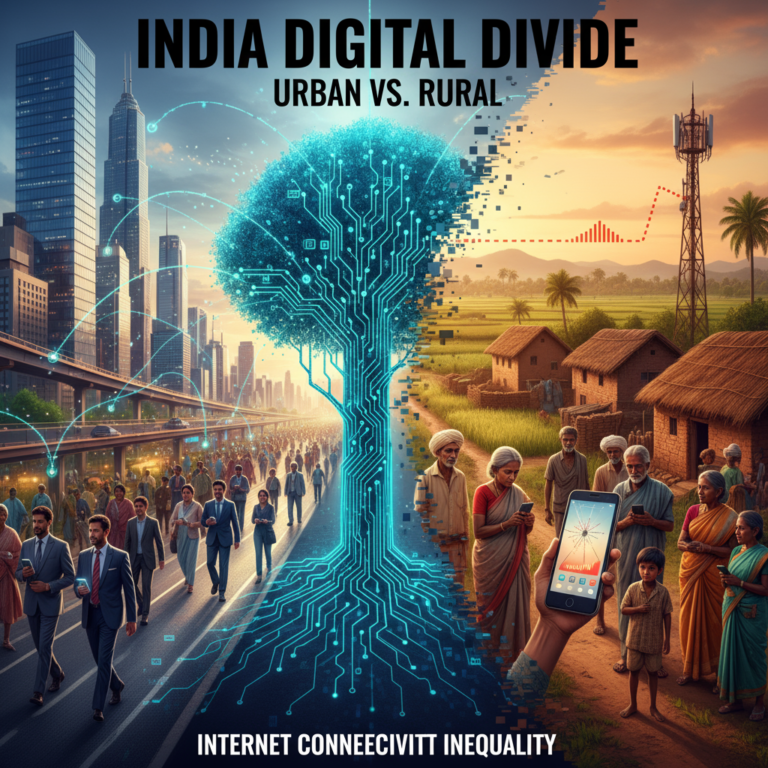



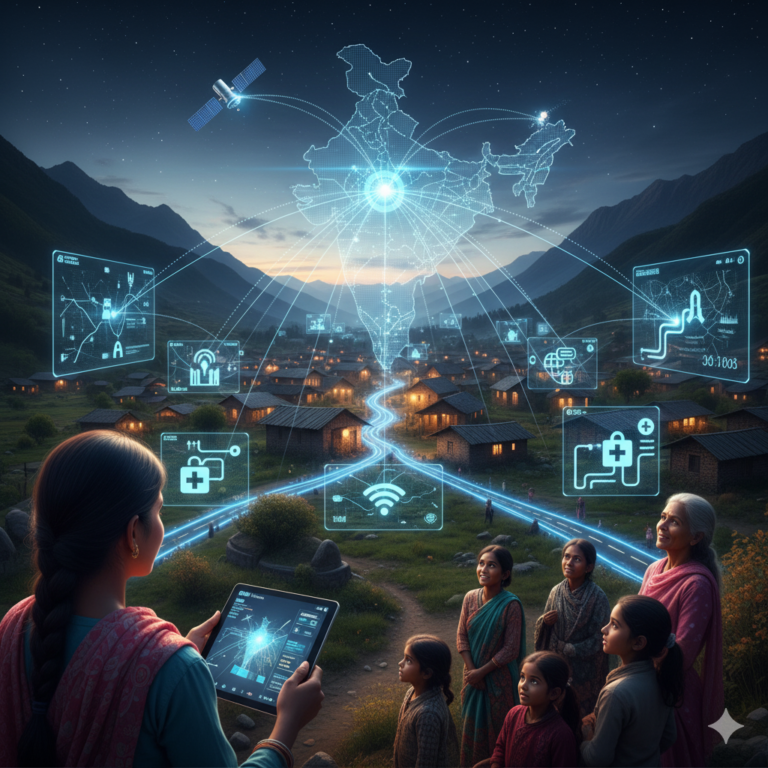
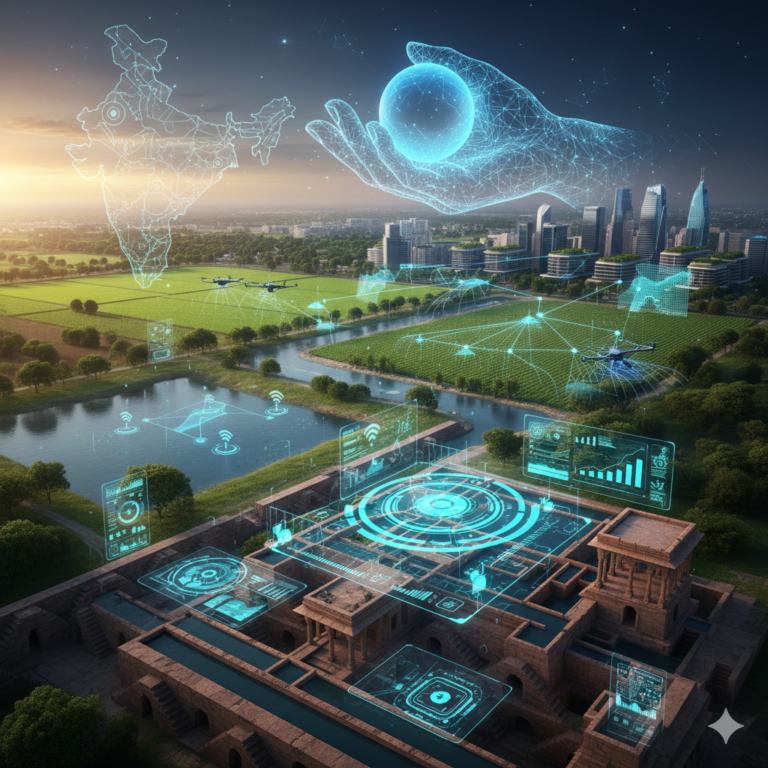
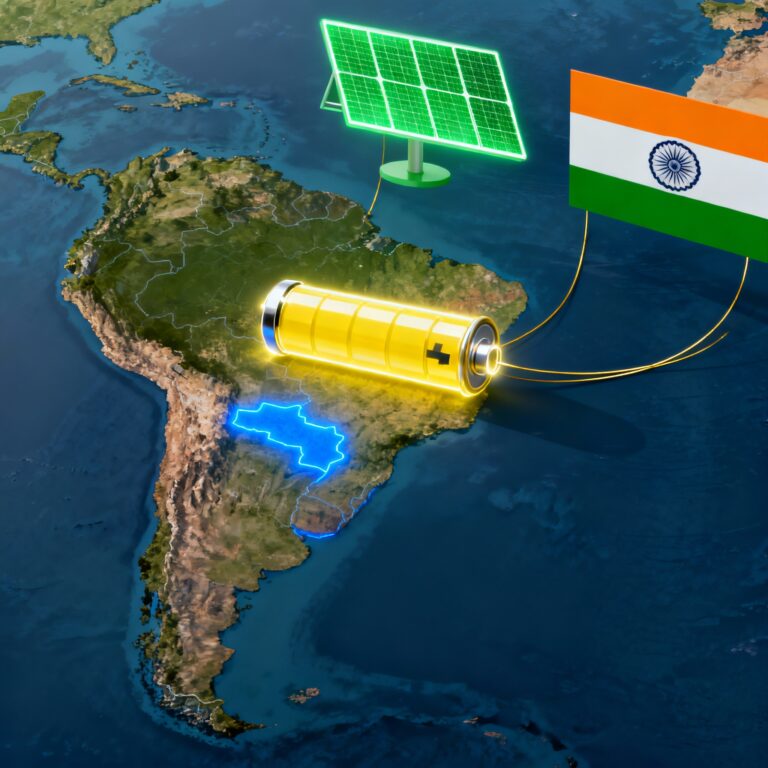

+ There are no comments
Add yours